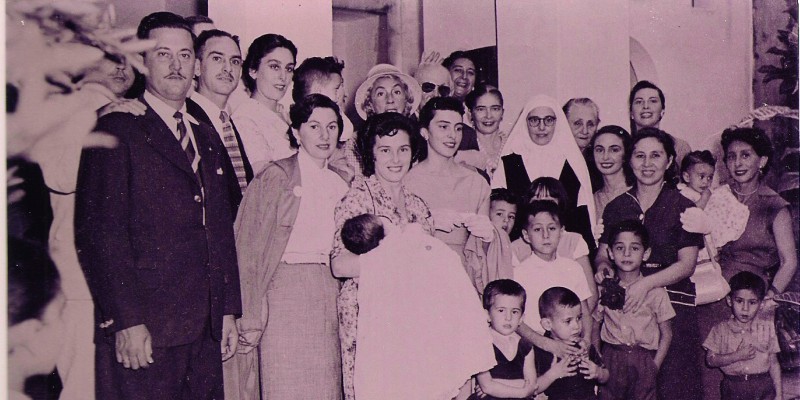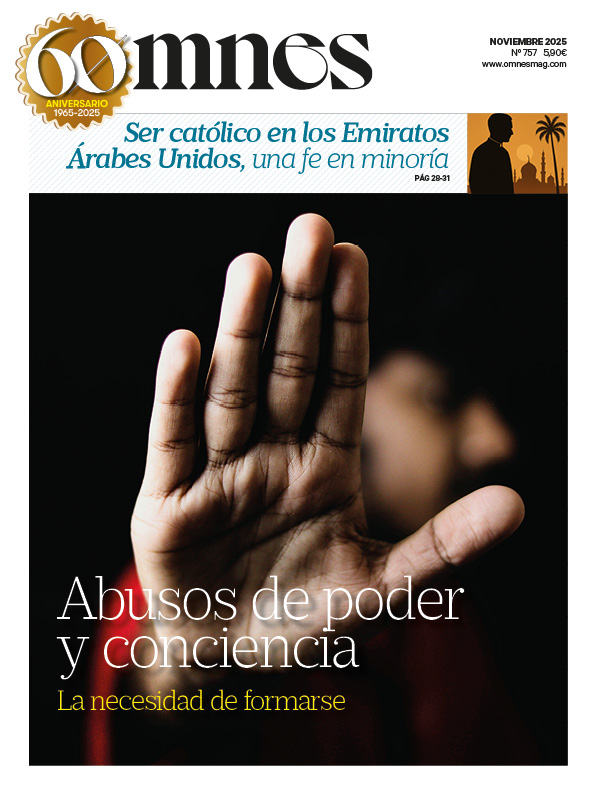Maria Felicia de Jesus Sacramentado, a Discalced Carmelite nun who died in 1959, will become the first Paraguayan blessed on June 23. Pope Francis is closely following the beatification of Chiquitunga.
TEXT - Federico Mernes, Asunción (Paraguay)
I travel 223 kilometers to meet with Koki Ruiz. The Pope's and now Chiquitunga's artist.. We cross paths. He is going to Asunción. This is the capital of the Heart of America, as our country, Paraguay, is known. It turns out that on April 28, 1959, a month before I was born, an aunt of mine, a Carmelite nun, died; 59 years later she will be elevated to the altars. Reading her biography, I learned that my grandfather was her godfather at her baptism! The process of beatification of Chiquitunga was opened in 1997, and she was declared Venerable in 2010 by Benedict XVI, who proclaimed her heroic virtues.
Chiquitunga (María Felicia Guggiari, 1925-1959), received that name from her father because she was a little petite. She was the eldest of seven siblings and came from a traditional, well-to-do and well-educated family. As a child, she stood out for her piety and inclination towards charitable works. As a young girl she joined the Catholic Action, being very active. A biography speaks of her as "formed and formed in Catholic Action". Indeed, first learn and then give. She joined at the age of 16 and left this association only to enter Carmel.
T2Os was their motto. It sounds like a chemical formula, but it was a reminder of "I offer you everything, Lord". Today this phrase is posted on the internet and refers to the future Blessed, who wanted to give herself fully to God. She worked in Catholic Action for more than ten years. Although confused about whether her path was marriage or consecrated life.
Responds to the vocation
And a story of human love takes place. She fell in love with a doctor, also a member of Catholic Action, whose father was an Arab -surnamed Saua-, of Muslim religion. A very spiritual courtship. Praying, chatting and crying, the two made the decision to give themselves fully to God: she in the Carmelite monastery and he in the seminary to become a priest. With this separation, their desire to give everything to the Lord, as she herself had wished, was once again fulfilled: "How beautiful it would be to have a love, to renounce that love and together immolate ourselves to the Lord for the ideal!".
Chiquitunga encountered great opposition from her father. Although she was of age, she did not go to the convent until she was 30 years old, so as not to displease her father. She commented before entering: "I do the opposite of Jesus: I lived thirty years of public life and now I begin my hidden life.". Indeed, it was not until she was 34 years old that she would fulfill her desire to become a cloistered nun.
She sought holiness on this new path. She adopted a new name for her new mission: Maria Felicia de Jesus Sacramentado. On one occasion, she said to her mother superior: "I am a mother.If I am to be mediocre, intercede for me and make me die!".
The current Superior speaks of what the beatification of Chiquitunga means to her and to the community: "It is a very big commitment, because with the beatification of our Sr. Maria Felicia, the Church once again confirms the value of the contemplative life within the Church. It means that today we can be saints in whatever place and circumstances in which we live. For the community it is a reason for joy, for gratitude for choosing one of its members to be a Light in the midst of our Church, and that fills us with immense gratitude.".
"I yield to you."
She spent four quiet and very happy years in the cloister. Two nuns who knew her still live there. They tell us that "She was very nice, she made jokes, very cheerful and very spiritual. When we both wanted to do the same things, she would say: 'I yield to him'. She had a lot of charity; she was very helpful, she wanted to help everyone; she said she wanted more time to help".
Mother Teresa Margaret, for her part, gives her testimony about her: "SHer novitiate year was spent as was to be expected of her generous soul towards her God: denying her nothing of what the Lord asked of her; so there was no difficulty for our Community to admit her to simple profession, which took place on August 15, 1956.".
From her life in the world and in the convent we can see that she was a woman of her time: very much of the world and very much of God. But in the last year, when she was 34 years old, she was faced with the ordeal of illness. An affection of the liver that later became complicated with blood led her to a fatal outcome.
Abandonment in God
She lived her last days with total abandonment to the will of God. Before surrendering her spirit to the Lord, she asked to be read the poem of St. Theresa "I die because I don't die". He listened with a very cheerful face and repeated the refrain: "That I die because I don't die". He would turn to his father and say: "Daddy dearest, I am the happiest person in the world; if you only knew what the Catholic Religion is!"He added, without wiping the smile from his lips: "I'm not a man of the world.Jesus, I love you! What a sweet encounter! Virgin Mary!".
As a consequence of the beatification, there is much more movement than usual around the friary. The Superior explains that the event "requires extra activities, so to speak, such as attending to people who come to share their testimonies, or to the media who want to know more about it, or sporadically to groups of young people who knock on our door to know about it.". It must be said that the Carmelite convents are full in Paraguay. There are young vocations. They are in five cities of the country.
Pope Francis admires Paraguayan women and often refers to them as "glorious". I ask the Superior: "Does Chiquitunga embody that figure?". "Of course, Chiquitunga embodies this figure." -he replies-, "because from her being a woman who knew how to love, to donate herself, to forget herself, she knew how to sacrifice herself for others without giving up anything for a greater good: the salvation of souls, like the glorious Paraguayan women, as the Pope says".
The ideal of Christ and surrender
Chiquitunga is close in time and in her activities, that is why her figure and upcoming beatification can mean a lot for the country. I continue with the Superior: "What does the figure of Chiquitunga say to Paraguayan society?". "Chiquitunga tells us that today we can become saints if we live with passion an ideal, in her case her desire that everything be saturated with Christ: Christ, his Church, the brothers and sisters were her ideal. She tells us that we can be happy by giving ourselves to others. Forgetting ourselves for the sake of others. It tells us that it is worth it: to offer everything, even the most precious. It tells us that we can be happy in a simple, joyful life, and by giving ourselves at all times.".
The Pope's new Apostolic Exhortation has just been published, Gaudete et exsultateon the holiness of the ordinary faithful. How opportune to speak of holiness and to have a figure. Countless initiatives have arisen on the occasion of the beatification. The most important is that of the artist Koki Ruiz. I have just received a whatssapp from Renato, a classical guitarist, who tells me that they are preparing a documentary about Chiquitunga.
The miracle
A married couple of deaf-mutes; she becomes pregnant: they arrive at the Health Center in a remote part of the country, very precarious. Coincidentally, there is a nurse who understands sign language. The obstetrician, upon seeing the baby's situation, attended her: "I am very happy.I leaned against the wall, opened my arms, closed my eyes and asked with great faith for Chiquitunga's intercession before God.".
After all the resuscitation work and prayers for the health of the newborn, finally after 30 minutes the baby began to have his first cardiorespiratory response with deep breathing, which was his first vital sign. I was able to see and hear it, a few months ago, at a Mass in honor of the future Blessed. At the age of 15, he is totally normal, without any disability. He is in the 9th grade of school, the one corresponding to his age. But it doesn't end here.
Chiquitunga's remains were in the family cemetery. After some time it was decided to move them to the convent. They were in a place until Dr. Elio Marín was called to attend a nun. He was told that they had the remains of Chiquitunga. He examined them and found the brain petrified. From the medical point of view, that brain should have disintegrated in the first days, taking into account the disease and the heat we have in these lands. Sister Yolanda, who knew her, commented: "... she was a very sick woman.I heard Mother Teresa Margaret say, when she learned that the body of Sister Maria Felicia had remained incorrupt longer than usual, that perhaps God wanted to glorify her, for she had been a very virtuous nun.".











